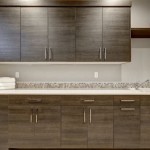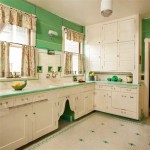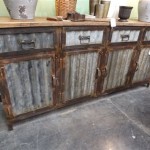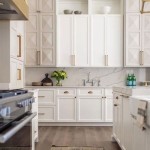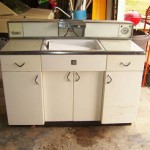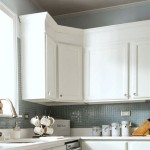DIY Kitchen Cabinet Ideas: Transforming Your Kitchen on a Budget
Kitchen cabinets are often the cornerstone of a kitchen's functionality and aesthetic. However, replacing them can be a significant expense. For homeowners looking to refresh their kitchen without breaking the bank, DIY kitchen cabinet projects offer a viable and rewarding alternative. These projects range from simple cosmetic updates to more ambitious structural modifications, allowing for tailored solutions to fit various budgets and skill levels.
Embarking on a DIY kitchen cabinet project requires careful planning and execution. It is essential to accurately assess the existing cabinets' condition, define the desired outcome, and choose the appropriate materials and tools. A well-prepared plan will minimize errors and ensure a professional-looking result.
Updating Existing Cabinet Doors and Drawer Fronts
One of the most impactful and cost-effective ways to transform kitchen cabinets is by updating the doors and drawer fronts. This approach allows homeowners to maintain the existing cabinet boxes, significantly reducing the project's complexity and cost. Several options are available, catering to different styles and budgets.
Repainting is a simple and often transformative process. The existing doors and drawers can be thoroughly cleaned, sanded lightly to provide a better surface for adhesion, primed, and then painted with a durable, high-quality paint suitable for kitchen environments. Choosing a new color can dramatically alter the kitchen's overall look and feel. Consider using a paint specifically designed for cabinets, as these are formulated to withstand frequent cleaning and resist chipping and scratching.
Refacing involves applying a new veneer or laminate to the existing cabinet doors and drawer fronts. This technique provides a fresh, modern look without the expense of replacing the entire cabinet. Veneer options include real wood, wood-look laminate, and paintable laminate. The chosen material is carefully adhered to the existing surfaces, creating a seamless and updated appearance. Refacing can be particularly useful for cabinets with outdated finishes or minor surface damage.
Replacing cabinet doors and drawer fronts entirely offers the opportunity to completely change the style of the kitchen. Numerous styles and materials are available, from traditional raised-panel doors to sleek, modern slab doors. Homeowners can choose from solid wood, MDF (medium-density fiberboard), or laminate, depending on their budget and aesthetic preferences. Pre-finished doors and drawer fronts are readily available, simplifying the installation process. When replacing doors, it's crucial to ensure that the hinges are compatible and properly aligned for smooth operation.
Adding new hardware, such as knobs and pulls, is a surprisingly effective way to update the look of kitchen cabinets. Replacing outdated or mismatched hardware with a cohesive set can instantly elevate the kitchen's style. A wide variety of hardware styles, finishes, and materials are available, allowing homeowners to personalize their cabinets and complement their overall kitchen design. Consider the size and style of the cabinets when selecting hardware; larger cabinets may require larger pulls, while smaller cabinets may benefit from smaller knobs or pulls. Ensure the new hardware aligns with the existing holes or be prepared to drill new ones and fill the old ones.
Improving Cabinet Functionality and Organization
DIY kitchen cabinet projects are not limited to cosmetic updates. They can also focus on improving the functionality and organization of existing cabinets. Adding pull-out shelves, drawer dividers, and other organizational accessories can significantly enhance the usability of the kitchen and make it more efficient.
Pull-out shelves are an excellent addition to base cabinets, making it easier to access items stored in the back. These shelves slide out smoothly, allowing homeowners to see and reach items without bending or straining. DIY kits are available, making the installation process relatively straightforward. When installing pull-out shelves, it's essential to measure the interior dimensions of the cabinets accurately and choose shelves that fit snugly but still allow for smooth operation. Consider the weight capacity of the shelves to ensure they can support the items being stored.
Drawer dividers and organizers help to keep drawers neat and organized. These accessories can be used to separate utensils, cookware, and other kitchen items, preventing them from becoming jumbled and difficult to find. DIY options include adjustable dividers, custom-built boxes, and pre-made organizers. Measure the drawer's interior dimensions before purchasing or building dividers to ensure a proper fit. Using drawer liners can also help protect the drawer bottom and prevent items from sliding around.
Adding spice racks to cabinet doors or installing a dedicated spice drawer can greatly improve the organization of spices. DIY spice racks can be easily constructed from wood or purchased as pre-made kits. Consider the size and shape of the spice containers when designing or selecting a spice rack. Installing a spice rack on a cabinet door can free up valuable shelf space, while a dedicated spice drawer can keep spices organized and easily accessible. Ensure the cabinet door hinges are strong enough to support the added weight of the spice rack and spices.
Installing under-cabinet lighting can significantly improve visibility and functionality in the kitchen. LED strip lights are a popular choice for under-cabinet lighting, as they are energy-efficient, long-lasting, and easy to install. DIY kits are available, making the installation process relatively simple. Under-cabinet lighting can illuminate countertops, making it easier to prepare food and perform other kitchen tasks. Consider using dimmable lights to adjust the brightness according to the task and time of day.
Creating Custom Storage Solutions
For homeowners with more advanced DIY skills, creating custom storage solutions within their existing kitchen cabinets can offer a tailored approach to maximizing space and functionality. This can involve modifying existing cabinets or building new storage components to fit specific needs.
Building a custom pantry organizer is a popular project for optimizing pantry space. This can involve adding adjustable shelves, pull-out baskets, and specialized storage for items such as canned goods, spices, and baking supplies. The design of the pantry organizer should be tailored to the specific items being stored and the available space. Using a combination of fixed and adjustable shelves allows for flexibility in organizing different sized items. Consider adding a spice rack to the pantry door or installing pull-out drawers for easy access to smaller items.
Converting a standard cabinet into a pull-out trash and recycling center can be a practical and space-saving solution. This involves modifying the cabinet to accommodate trash and recycling bins, which are then mounted on a pull-out frame. This keeps the trash and recycling out of sight and prevents odors from spreading. Ensure the pull-out frame is sturdy enough to support the weight of the filled bins. Consider adding a lid to the bins to further contain odors.
Creating a custom wine rack or wine storage area within a cabinet can be an elegant and functional addition to the kitchen. This can involve building a rack from wood or purchasing a pre-made wine rack that fits within the cabinet. The design of the wine rack should be tailored to the size and shape of the wine bottles. Consider adding lighting to the wine storage area to highlight the wine collection. Ensure the wine rack is securely mounted within the cabinet to prevent bottles from falling.
Adding a built-in cutting board or pull-out work surface to a cabinet can provide additional workspace in the kitchen. This can involve modifying the cabinet to accommodate a cutting board or pull-out shelf that can be used for food preparation. Ensure the cutting board or work surface is made from a durable and food-safe material. Consider adding a lip to the edge of the work surface to prevent items from rolling off. This can be particularly useful in smaller kitchens where counter space is limited.
When pursuing DIY kitchen cabinet projects, safety should be prioritized. Always wear appropriate safety gear, such as safety glasses and gloves, when working with power tools or chemicals. Follow the manufacturer's instructions for all tools and materials. If uncertain about any aspect of the project, consult with a professional. Proper planning, careful execution, and a commitment to safety will ensure a successful and rewarding DIY kitchen cabinet transformation.

Diy Kitchen Cabinets 25 And Easy Ideas For An Update Joyful Derivatives

21 Diy Kitchen Cabinets Ideas Plans That Are Easy To Build Cupboards Farmhouse

Budget Friendly Diy Kitchen Cabinet Ideas The Turquoise Home

Diy Kitchen Cabinets 25 And Easy Ideas For An Update Joyful Derivatives
:max_bytes(150000):strip_icc()/FauxBeadboardCabinetsWithWallpaper-5a1cdb9e47c2660037ebefd4.jpg?strip=all)
10 Diy Kitchen Cabinet Ideas

Budget Friendly Diy Kitchen Cabinet Ideas The Turquoise Home

21 Diy Kitchen Cabinets Ideas Plans That Are Easy To Build Building Cabinet New

Diy Budget Open Kitchen Cabinets Build Your Own In A Weekend

Diy Kitchen Cabinet Upgrade Ideas

Diy Budget Open Kitchen Cabinets Build Your Own In A Weekend
Related Posts

